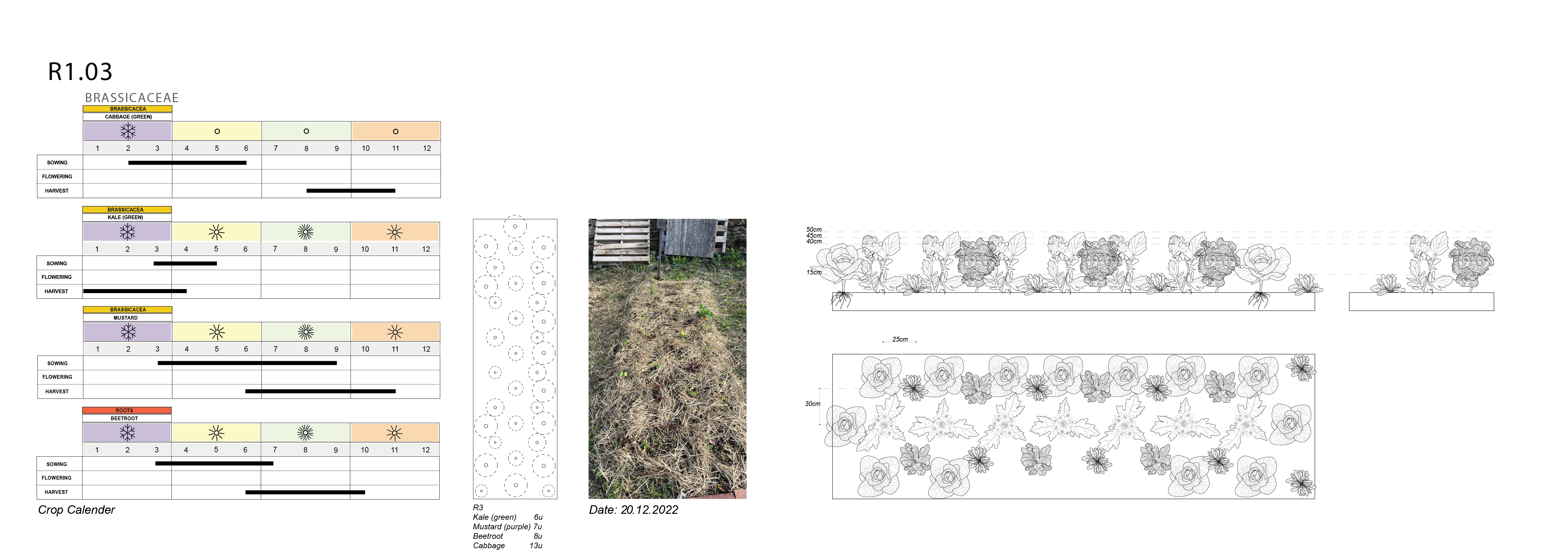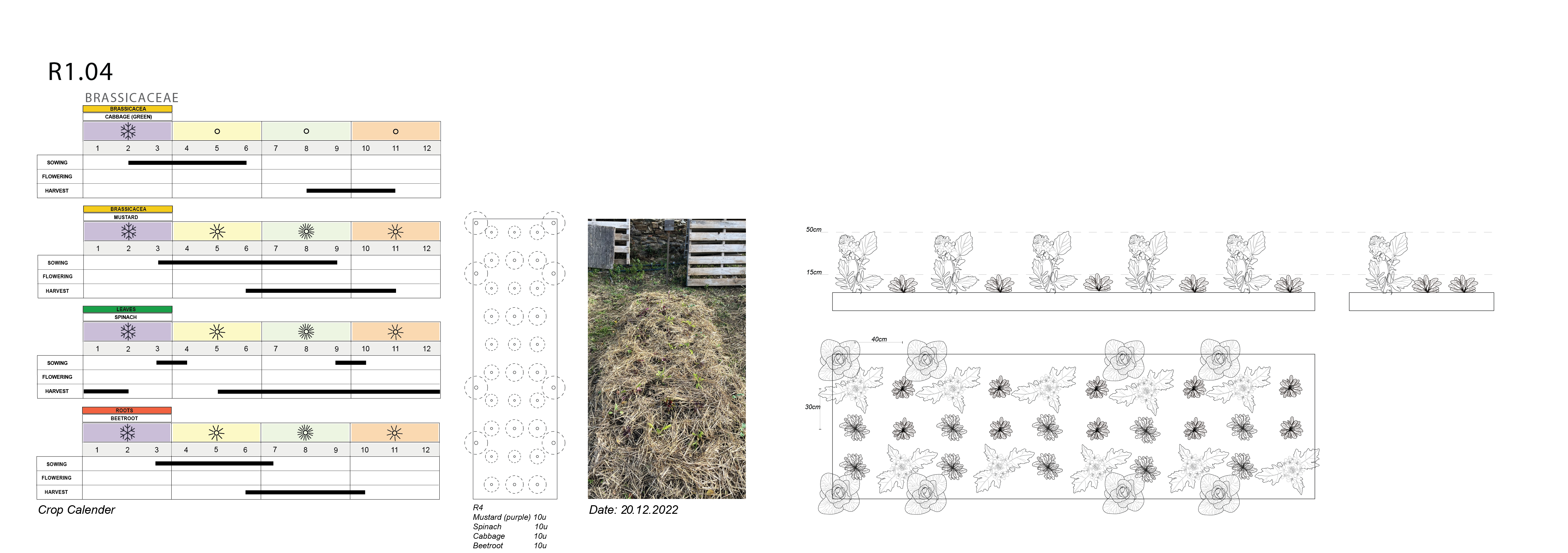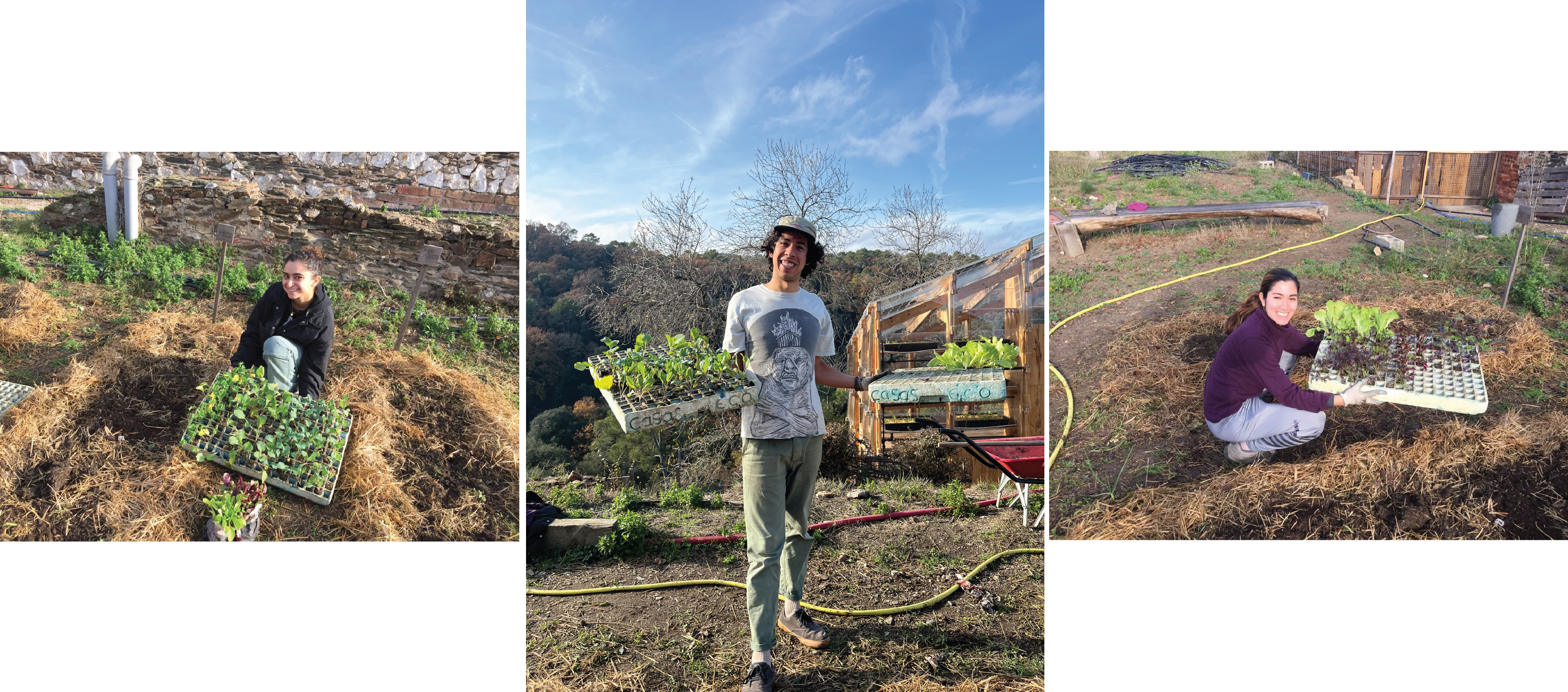As part of the IAAC´s Master in Advanced Ecological Buildings and Biocities of 2022-2023, we got involved in the yearly garden that conforms not only of the Valldaura Labs property, but also to our home and therefore provides food to all our us. In order to manage the garden, during these past months we had divided ourselves into four different groups. Each one of them got in charge of five cultivation beds to take care of, which correspond to 4 different types of cultivation species that will be rotating seasonally through the year: Brassicaceae, Leavy, Legumes and Roots.
Our group, responsible of the Brassicaceae field and the first five beds of the garden, had been in charge of cleaning, planting and watering the first step of the rotation. As a team, we did some research on what type of species are adaptable to live in Valldaura. Then, we had determined that each bed would have small differences according to the different types of species we wished to harvest.
According to this, and assigning two beds to each one of us, we developed the following system:
- B1: Cabbage, Kale (red)
- B2: Spinach, Kale (green), Cabbage, Beetroot
- B3: Kale (green), Mustard (purple), Beetroot, Cabbage
- B4: Mustard (purple), Spinach, Cabbage, Beetroot
- B5: Kale (green), Cabbage, Beetroot

a
All the species (Brassicaceae, Leaves, and Roots), were transplanted from saplings pots to beds. We are still waiting for results.
a
Bed R1.01:
- Cabbage: Brassicaceae
- Kale (Red): Brassicaceae

Bed R1.02:
- Cabbage: Brassicaceae
- Kale (Green): Brassicaceae
- Spinach: Leaves
- Beetroot: Roots

Bed R1.03:
- Cabbage: Brassicaceae
- Kale (Green): Brassicaceae
- Mustard: Brassicaceae
- Beetroot: Roots

Bed R1.04:
- Cabbage: Brassicaceae
- Mustard: Brassicaceae
- Spinach: Leaves
- Beetroot: Roots

Bed R1.05:
- Cabbage: Brassicaceae
- Kale (Green): Brassicaceae
- Beetroot: Roots

As co habitants of Valldaura Labs and been in charge of the garden, throughout the process, we have learned as much as possible about our surrounding and our development as a part of this co living. Being responsible of the Brassicaceae rotation grow had been a challenge to us, not only because of how to plant, conserve and harvest these greens, but also because we did not consider some of the side factor that could affect our garden. Sadly, during the past month we got affected by many wild boar attacks which left some of our beds useless.
Although these unfortunate events, after some very sad days, we managed to remove the wild weeds that were dominating our beds and instead we replaced them with some more Brassicaceae species that we got. After having a couple of nights in the greenhouse, we decided to plant them again in the beds.
Apart from these events and the readaptation process we had to go though with, we can say that we nourished ourselves with some knowledge as well as some tasty food we had harvest. Even though this was the first time planting our food; at least for most of us, we have to say we have taken well care of our task and we have learned through the process in a very scientific way. Documenting and diagraming every species we planted and trying to be as detailed as possible on how our plant grew among each other.


